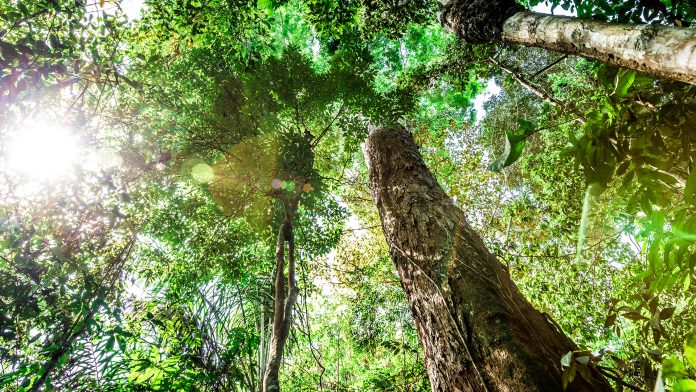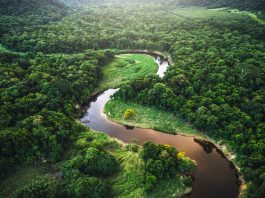A new study led by the University of Bristol highlights the necessity of better protection for Amazon forests to alleviate effects of climate change.
Large areas of forest regrowing in the Amazon are being impacted by climate and human disturbance, say researchers.
Parts of the Amazon forest, that have naturally regrown on land previously deforested for agriculture, are developing at varying speeds.
Researchers led by the University of Bristol, alongside scientists from Brazil’s National Institute for Space Research (INPE) and the universities of Cardiff and Exeter, have discovered a connection between slower tree growth and land scorched by fire.
The findings, published in Nature Communications, highlight the necessity of better forest protection in order to alleviate the effects of climate change.
Many countries pledged to restore and reforest millions of hectares of land to help achieve the goals of the 2015 Paris Agreement, including Brazil, which pledged to restore 12 million hectares.
Understanding how the environment and humans affects forest regrowth will enhance estimations of the climate mitigation capability in the decade, which the United Nations has called the “Decade on Ecosystem Restoration”.
Viola Heinrich, lead author and PhD student from the School of Geographical Sciences at the University of Bristol, said: “Our results show the strong effects of key climate and human factors on regrowth, stressing the need to safeguard and expand secondary forest areas if they are to have any significant role in the fight against climate change.”
Secondary forests areas growing on used land can absorb carbon up to 11 times faster than old-growth forests. However, factors such as forest land which has been burned for use for agriculture or when fire elsewhere has spread, impacts the spatial patterns of regrowth rate.
Researchers combined satellite-derived images that identify changes in forest cover over time to find secondary forest areas and their ages, along with satellite data that can monitor the aboveground carbon, environmental factors and human activity.
They found that the effects of disturbances such as fire and repetitive deforestations before regrowth decreased the regrowth rate by between 20% to 55% across different areas of the Amazon.
“The regrowth models we developed in this study will be useful for scientists, forest managers and policy makers, highlighting the regions that have the greatest regrowth potential,” said Heinrich.
Dr Jo House, co-author and also of the University of Bristol, added: “The findings in our study highlight the carbon benefits of forest regrowth and the negative impact of human action if these forests are not protected.
“In the run up to the 26th Conference of the Parties, this is a time when countries should be raising their climate ambitions for protecting and restoring forest ecosystems, not lowering them as Brazil seems to have done.”
Next, the team will concentrate on employing its techniques to estimate the regrowth of secondary forest across the tropics.









